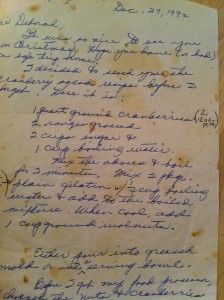I met a priest once in Hazard, Kentucky, who declared himself an “Adventist.” He was annoyed with the way Christmas overshadowed its season of preparation and he wanted to make a point. I understand where he was coming from. Advent is my favorite liturgical season of the year, all purple and quiet patience, longing and increasing light in the darkest days of the year.

Now this is how to graciously invite people in while extending ourselves without judgment. (redmondumc.org)
What I don’t understand are people who get angry about it. Hostile, even. As in, This is about the baby Jesus, damn it! Really? That’s the reason for the season?
I am not prone to exuberant sentimentality but if “the season” encourages more people to extend kindness, practice generosity, go out of their way to include the lonely and the lost, soften the teeniest bit at the calcified edges, stop and enjoy the moment – lights, tree, tastes, textures, rare gatherings of friends and family – then what, exactly, is the problem?
I don’t know about you, but I can always use more generosity, kindness, and compassion in my life. I’m not so rich in these that I can fritter them away or turn my back when they’re offered.
The windup – and the problem – comes with expecting TV news or entertainment to proclaim the gospel, rather than looking to your faith and your church for that. The problem with being so uptight about how everyone else is spoiling it is that no one wants to hear the real message if it will come from those same angry lips. The problem comes with expecting purity out there in the general culture without asking the same of yourself and your actual church.
But the biggest problem I see and the biggest disconnect with the story of Jesus is how un-Christlike these You’re not in the clubhouse and you’re getting it wrong messages are. And how much we still resemble those clueless disciples who also had trouble hearing what Jesus was saying. Remember when the disciples stumbled upon someone casting out demons in the name of Christ (Mark 9: 38-41; Luke 9: 49-50)? The tattle-tales went straight to Jesus and reported on this distressing news, including the fact that they tried to stop him “because he was not following us.” Jesus rebukes them and says, “Whoever is not against us is for us.”
I’m not saying buying a Christmas stocking and hanging lights makes you a Christian. I’m saying – because I hear Jesus saying it – it doesn’t make those of us in the church any less Christian when someone outside does this, and it’s not cause for anger and ostracizing. Jesus, those people are giving Christmas presents and they don’t even understand what Christmas is! The reply: Whoever is not against us is for us.
So, swing wide the gates and rejoice! Enjoy the lights and the fudge and the holiday parties and accept the extra kindness whenever and wherever it’s offered. The gift of the incarnation is so huge it overflows our limited comprehension, established practices, and boundary lines. Anyone who is encouraged to be more kind, just, loving, or generous because of “the season” does, indeed, get it. It’s not up to the church or any God police to proclaim how much. It’s up to those of us called Christian to recognize it when God shows up – especially in the unlikely and least expected places (manger) or people (Saul).
None of us can completely understand – no matter our reverence or years of Sunday school – the totality of God incarnate in Jesus Christ. That’s why we keep reading and telling the story and trying to live more faithfully into it. This much is clear: We are sharing in a gift we all receive, not a treasure just a few of us jealously guard. Why would we want to fence it in?
*
graphic credit: © 2013 Patrick Scriven & Karyn Kuan, Redmond UMC

